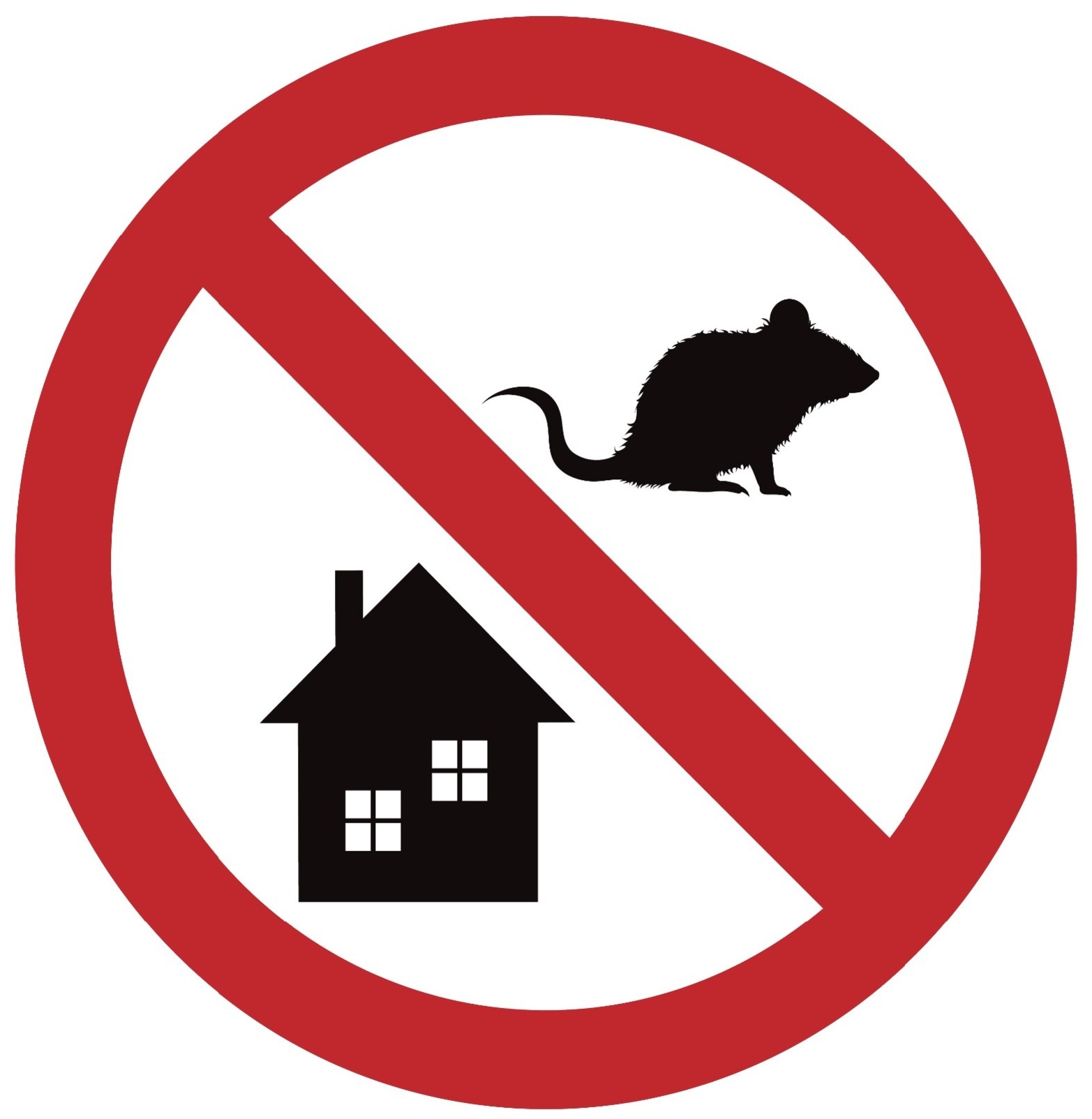Autumn Pest Prevention
Posted on 26th October 2020 at 16:14
Pests are coming - don't wait until its too late
For the rodent pests; vermin such as the grey squirrel, rats and mice autumn is a time of plenty which is quickly followed by famine. The berries, nuts and seeds are quickly eaten or stashed away for safety and what follows are the harsh times with scarce supplies of food and cold weather.

This means that your home or business is now being targeted as a safe, warm and comfortable space in which to hole up in and wait until the weather improves. We see a marked increase in callouts for these three species from November onwards and the first overnight frosts? Well, they will bring in a flurry of calls from people all woken to the sound of scratching in the loft.
In many cases if rats or squirrels want to get in then they will, both of these have incredibly powerful jaws equipped with sharp incisors that are harder than cast iron. Wood and plastic will not stop them and over time we have seen them round of house bricks enlarging a defect to allow access into a cavity wall.
Mice are a different issue, think of them as the Tom Cruise in Mission Impossible of the rodent world, these animals will sneak in through the smallest of gaps which go unnoticed, in fact when we’re dealing with mice inside a property we often have to crawl around the perimeter looking for the access point.
So, what can you do about pests and how can you stop them?
Some autumn pests are really only treatable by professional pest controllers, things like cluster flies and fleas can be hard to eradicate yourself if you don’t have the equipment that we carry, ultra-low volume fogging machines and powerful insecticides make short work of large areas like lofts that may contain thousands of the different types of cluster flies.
What are cluster flies?

More information can be found on species of cluster fly here.
These are a type of fly that will live outside during the summer months where they lay their eggs in the soil; the larvae parasite earthworms. When the adult flies emerge from pupation in the autumn, they seek dry cool areas in which to hibernate, the trouble with cluster flies is that they will often end up inside lofts and roof spaces.
There are many insects that will look to find somewhere dry and cool to spend the winter in, some people may consider these as pests and others may not but we’ll see many species of fly, ladybirds and spiders all take up residence in sash window frames and lofts. These can be treated with insecticidal powder as required and we can see large amounts of insects congregating together.
Regular pest control treatments are the right approach to deter annoying and sometimes dangerous pests. Don’t wait till breeding seasons are at its peak – protect your home with long lasting preventative treatments that have lasting residual and repellent components.
House spiders another autumn invader

Love them or hate them spiders can be beneficial to us for more information on house spiders -
If you have concerns over spider bites you can find out more on the NHS site here -
Spiders are another insect ‘pest’ that invades our homes and businesses during the autumn, I say ‘pests’ because when you think about it; who is the better controller of flies and other insects other than spiders?
The trouble with attempting to treat spiders is that we rely on insecticides to work on a residual capacity ie: the treated areas remain active long after the day we attended. As spiders walk on eight feet, they don’t absorb enough of the active substance to kill them, the spider we are most likely to encounter in the autumn is the house spider; aptly named as they come indoors during the mating season which runs from August to September.
House spiders are the biggest species of spider in the UK measuring around 10 cm across the span of the insects legs, as well as being scary, house spiders can bite and these can become infected from bacteria covering the spiders fangs.
Like cluster flies, house spiders are relatively harmless to us and more of a nuisance than anything else, the best course of action when discovering a house spider is to pick it up using a glass and a piece of card or thick paper as a trap and throwing it into the garden.
Rats, mice and squirrels - the inward migration begins.
The unfortunate part is that may pest infestations go unnoticed for a very long time, especially over Autumn and Winter seasons, and home occupiers become aware of a pest problem after they see damage or evidence of pest activity, this is very common with rodent infestations.
There are three types of rodent pest – rats, mice and squirrels and each type has a different way of getting inside our home.
How do mice get inside our homes?
Mice are capable of gnawing through things like plastic airbricks, they can also nibble through wooden door thresholds that are starting to soften and rot. In fact its common for some of the smaller types of rodent like the pygmy shrew to get inside through the unsealed gap beneath a door. Pygmy shrews are insectivores and they live in leaf litter, these are the UK’s smallest animal and are definitely not seen as a pest; their small size allows them to slip inside our homes where they are mistaken for mice.
The most common types of mice we find in our homes across Reading, Wokingham and Woodley will be the different types of field mice; this includes voles and other types of shrews and they like us are warm blooded; as the weather cools they come inside to stay warm. They will gnaw at plastic air bricks as well and we must realise that mice are able climbers and can scale a rough brick wall gaining access through old pipe holes and unused tumble dryer vents. These openings all cut through the cavity wall of the house, from here its an easy climb up to the loft of the house where they will nest in the loft insulation often making scratching sounds on the plasterboard at night.
What about rats, how do rats get into our homes?

Rats are another autumn pest, but these are much different to mice, for one they will stay inside all year if given the chance and they will breed all year long in the right conditions. Rats will enter houses and businesses in just about every area – from underneath through defects in the drains, gnawing through plastic air bricks, climbing plants and vines and even by jumping from walls, trees and sheds and getting in under roof tiles. Rats are a major problem across Reading, Wokingham and Woodley and we always see a marked rise in internal activity as the temperatures drop.
Are squirrels a problem in Reading, Wokingham and Woodley?

The answer to that question is a resounding YES they are, as a non-native species the grey squirrel doesn’t have to worry about predators and they have two breeding seasons each year meaning their numbers of spiralling out of control. We find there is a lot of activity with squirrels in lofts during the autumn and winter and then it significantly ramps up as we run into January and February with the onset of their first breeding season.
Grey squirrels are able to jump around five times their body length so trim back overhanging bushes and tree limbs to help keep them at bay.
As cute as they are portrayed, the grey squirrel is an invasive species and responsible for a lot of damage - click here to visit the Woodland Trust Website.
The Autumn Pest Control Checklist
There are things that you can do in the autumn to reduce your exposure to a pest infestation and these are quite simple.
• Rake up fallen leaves and place in the compost bin, this prevents harbourage for the smaller rodent species and as the leaves collect in corners and down the sides of buildings where we will venture less during the winter so it removes their hiding places.
• Before the autumn storms roll in, carry out those little jobs that you’ve been putting off when the weather was too warm; that broken roof tile? Replace it to keep out squirrels and cut down on the chance of cluster flies.
• Have you been meaning to tidy up the shed all summer? Its an ideal time to sort out outbuildings and sheds, who knows you may discover that you’ve got rats living at the bottom of the garden – will they stay there all winter?
• Clear out guttering and any blocked drains; overflowing drains will contain small bits of food, rice, vegetables and fat – all food for rats so get these unblocked and cleaned up with a degreasing solution to leave no trace.
• Storing bird food or dog food in the shed? Make sure that these containers are string enough to withstand rodent teeth; plastic may work if its got rounded corners but I would recommend keeping food items in metal containers, an old metal filing cabinet is ideal.
• Cut back any vegetation that’s crept up the side of the house during the summer growing season, its easy to ignore ivy, vines and creepers but these plants will push up under roof tiles creating openings for mice and even rats.
• Cut back tree limbs that are reaching towards the house; squirrels will jump quite a distance and rats can jump over a metre from a standing start.
The aim is to be pest free, a few small changes now could save you the expense, the hassle and the fear of a rodent infestation.
Share this post:






